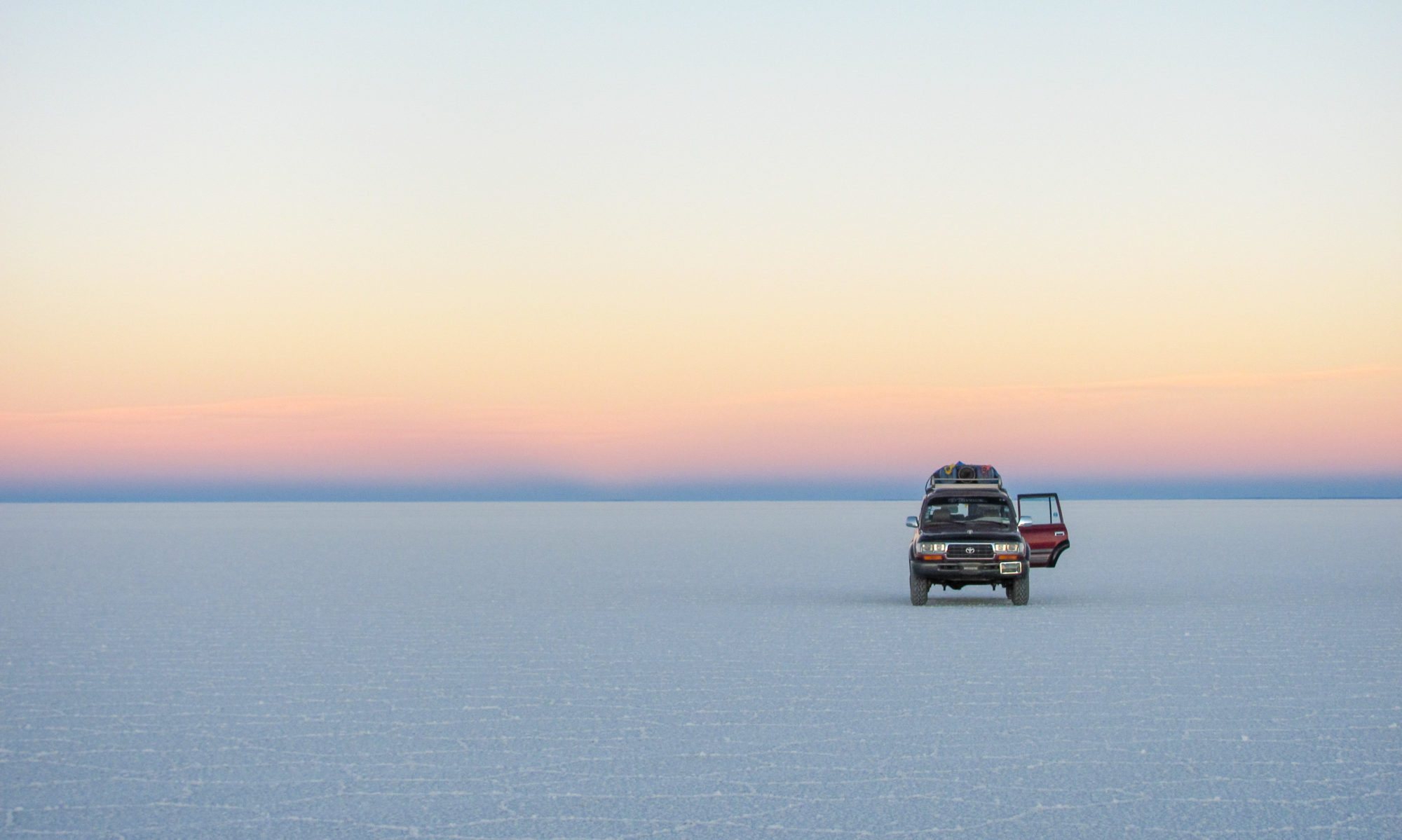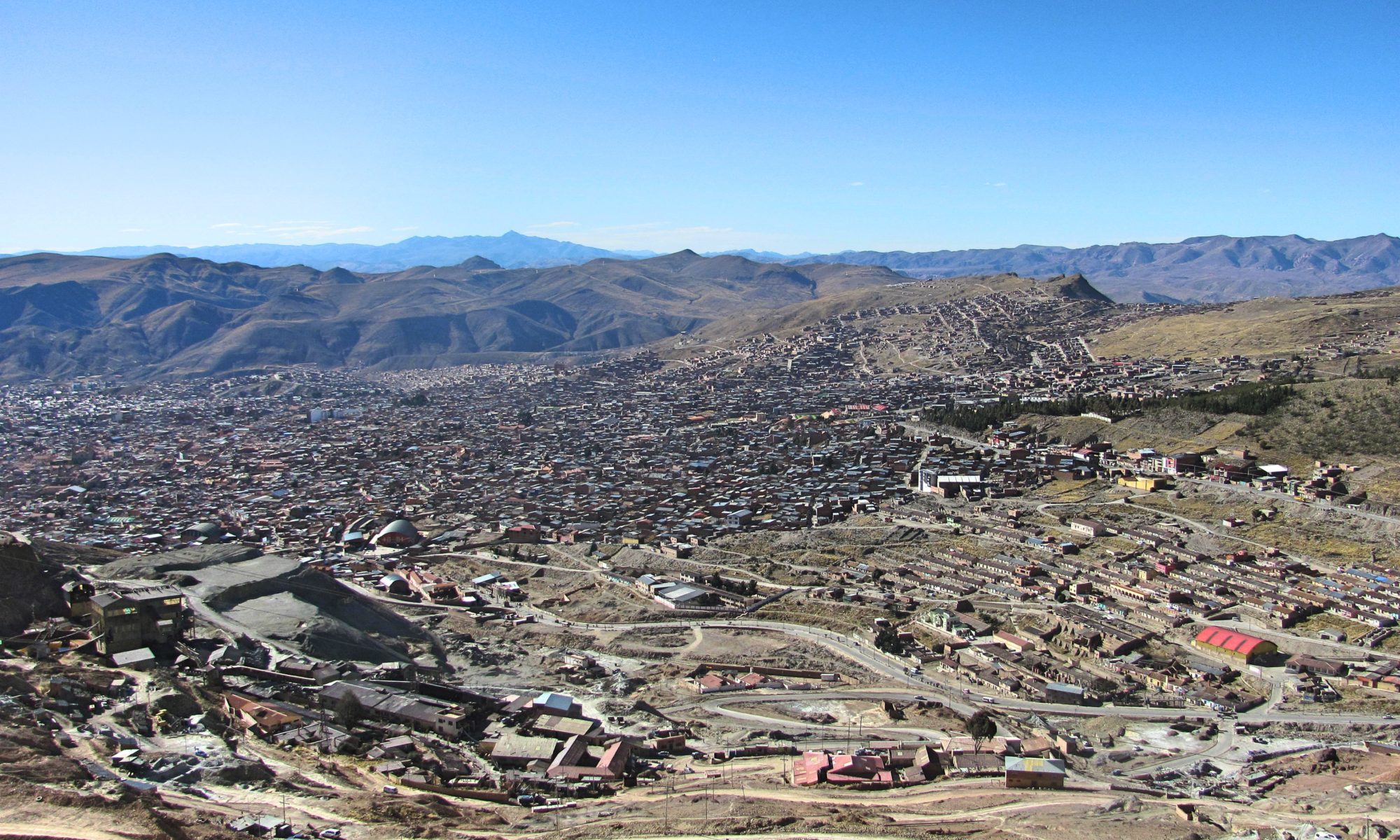Potosi in Bolovia is not a pleasant place to be. It’s cold, at high altitude, the historical center is not pretty and the people are grumpy. But that’s okay because you did not come here to soak up pretty architectural sights, you came to visit the infamous silver mines. And believe me when I tell you that crouching through cramped, dark, dusty tunnels at an altitude over 4500M with 40 degrees Celsius inside the mines, is not for the faint-hearted.
In the hay-days of the silver mines, Potosi was the richest town in South-America. The hills were so rich of it that at its time the silver from Potosi alone attributed to over 60% of the total world supply. It largely funded the Spanish conquest of the New World. A ghost of these riches is still reflected in some of the old Hispanic buildings in the center of town. In the 1800’s the mines became largely depleted and the once thriving silver-economy crumbled. Nowadays even though the profits are decimated, the mines are still actively mined by a staggering 15,000 workers on a daily basis. To the contrary of what some travel-guides claim the miners do not just mine lesser metals, silver is still being hauled from the labyrinth of tunnels that mole the ‘Cerro Rico’, the large mountain that towers over the small miner-town.
– Practical Information –
When: Potosi has a cold arid climate with sunny days and little perspiration throughout the year. Nights get a bit colder from May-July and the little rain that does fall, falls between December and February.
In & Out: Potosi has a small airport that receives flights from La Paz and Cochabamba every other day (be prepared for a bumpy ride in a tiny plane!). The airport is situated 8KM from the heart of the town and the easiest mode of transport is by taxi, which will only cost a couple of bolivianos.
By far most people come to Potosi by bus from either Uyuni or Sucre, its location being the perfect stop-over to break up the long bus-ride. Potosi has two bus terminals the old one (30 minute walk from the center) and the new ‘Nueva Terminal’. For most destinations (and all lang-haul rides) you will need to get to the latter. Buses go for 1.5 bolivianos but a cab will not set you back much more for the 5KM ride if you share it with a fellow traveler so I’d advise to go for that option. There will always be a few guys waiting outside the terminal, eager to pick you up.
Budget: As is true for most of Bolivia, Potosi is dirt-cheap. it will not be difficult to find a 3-course meal in a restaurant for under 15 bolivianos or a spicy hamburger (‘hamburguesa’) for about 3B. A night in a hostel with heating will set you back 50B and a lower mid-range hotel double. Tour to the mines sets you back 120B.
– The City –
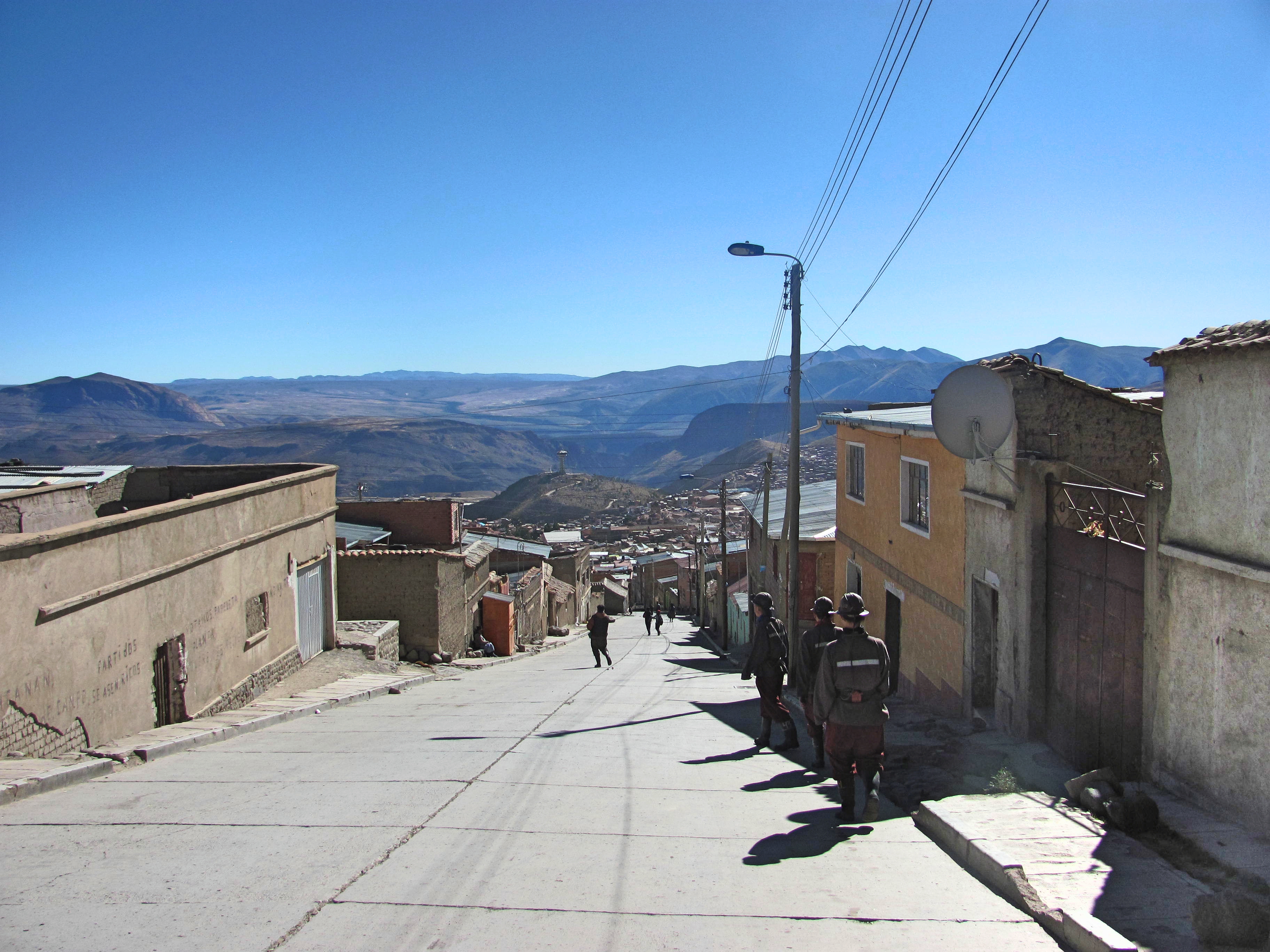
When silver was first discovered in Potosi in 1545 the town quickly boomed due to a large influx of Bolivians and foreigners all looking to make it big. At its peak in the late 1600’s the town was said to be inhabited by more than 200,000 people. When the mines started to bring in poorer yields and the silver-prices fell, this number dropped to almost a tenth of it. But the rise in tin-prices and the continuous discoveries of new silver-fields helped the town recover to roughly its old size.
Potosi is not a touristic town. You’ll see some tourist hanging around but the economy is very much centered around the mines. There are some churches and sights to be seen but this is all sub-par and ill-maintained. If you do not intent on visiting the mines, you might as well skip Potosi altogether.
The interesting thing about walking around in Potosi is that it gives you a glimpse of the rural and somewhat industrial side of Bolivia. Life is not easy here and you can see it in the faces of the people. The altitude brings in the cold and forces inhabitants to rely on local import for their fruits and vegetables, and because of all the fine-dust and toxic fumes most miners do not live beyond 40.
Eating: I did not find any restaurants that were outstanding enough to mention here. Throughout the center are eateries. Good street-food can be found at the end of Calle Junin, where it crosses into Bolivar,
Sleeping: I chose Koala’s Den and would wholeheartedly recommend it if you are looking for budget-accommodation with excellent breakfast and good heating. In the morning everybody gathers around at a large table and pancakes and eggs are made on request. Since Potosi nights are literally freezing it is important to have good heating in your rooms – Koala’s Den got you covered. They charge you 50B a night on arrival, 60B if you reserve up ahead. If you stay the night you get a small discount on the tours the offer (including the mine-tour).
– The Mines –
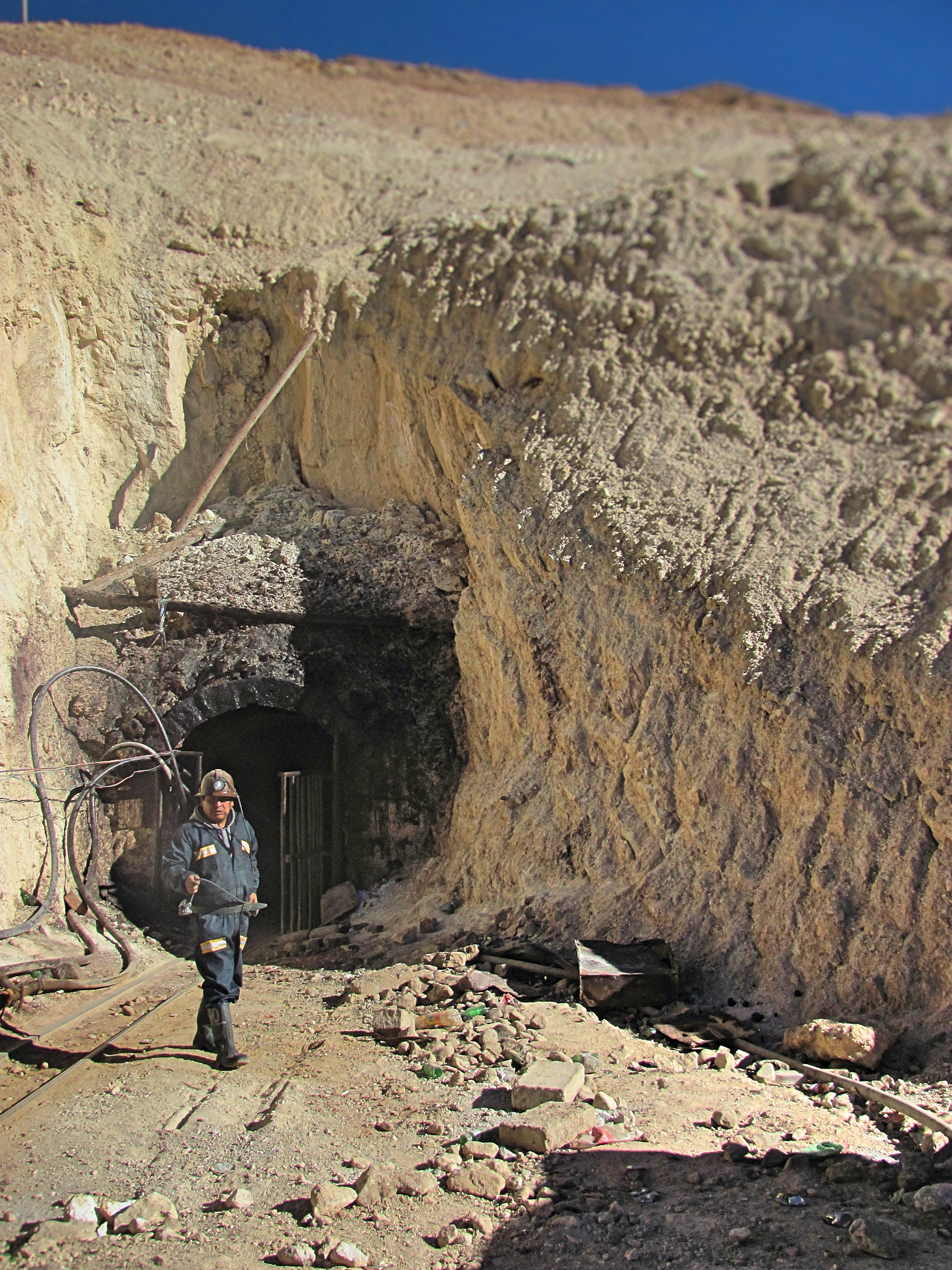
A visit to the mines is wildly interesting and shocking at the same time. It is thrilling, not without risks and gives you an inside in the harsh conditions in which the people work here.
There is some debate going on about whether one should avoid visiting the mines. Some argue that by visiting you signal your approval of the horrendous working-conditions while others state that visiting is the only way to raise awareness. The way I see it is that because the mines are operable for the proceeds and not for tourism, by visiting you are not approving or encouraging its continuous use. At the very least a visit will make you aware of the fact that there are many people that work in terrible conditions still today.
Mining is organized in privately run cooperatives. The way it works is that miners have to buy their way into a cooperative. Generating enough money to do so will generally take a miner about 5-10 years, working 12 hour-shifts for 6 days a week. Many drop-out and even more get injured before they get this far. Once part-owner of a cooperative life gets a little easier. Working in the mines will be limited to 7 hour-shifts for about 5 days a week. The work-activities will also be better. Work shifts from hauling rocks to placing explosives. However this ‘better life’ cannot be enjoyed for very long as miners – as I stated before – tend to not live beyond 40.
The Tour
Once you decided on going into the mines its time to pick a reliable company to go with. A visit will never be completely safe. Cave-ins do happen about once a year and generally the people caved-in do not survive. It is estimated that since over 8 million people have died in the mountain hence the nick-name ‘The Mountain that Eats Men’. Since there are not a lot of people visiting, there is not an abundance of choice. After talking to some travelers and comparing the different companies (mainly through tripadvisor and by visiting their offices) I decided on going with Koala Tours (cost: 120B) which is the tour-company of the Koala’s Den hostel. The main plus was that the tour has a group-maximum of 4 people and always goes out with 2 guides. We had a guy in our group that wanted to turn back 10 minutes in. One guide immediately went back with him while the main guide pushed on with the three of us.
The tour starts with a visit to a silver or tin refinery. A local worker explains in Spanish (mixed with some English if your lucky) how they process the metal-ore. Afterwards its time to visit the ‘miners-market’ which is basically a small shop that sells supplies for miners. Since the mines are still operable, you will see a lot of miners working in the tunnels and they will ask you for a small gift. You can either give them some water, soda or coca-leaves (to chew on to combat the altitude) or buy them dynamite that they use for controlled explosions.
After stocking up you’ll be taken to a storehouse where you can change into protective work-clothes and get outfitted with a scarf to cover your mouth and an old-fashioned headlamp to light up the pitch-dark tunnels. A minibus takes you up to about 4500 meters in 30-40 minutes to one of the openings into the Cerro Rico from where you will venture into the mines..
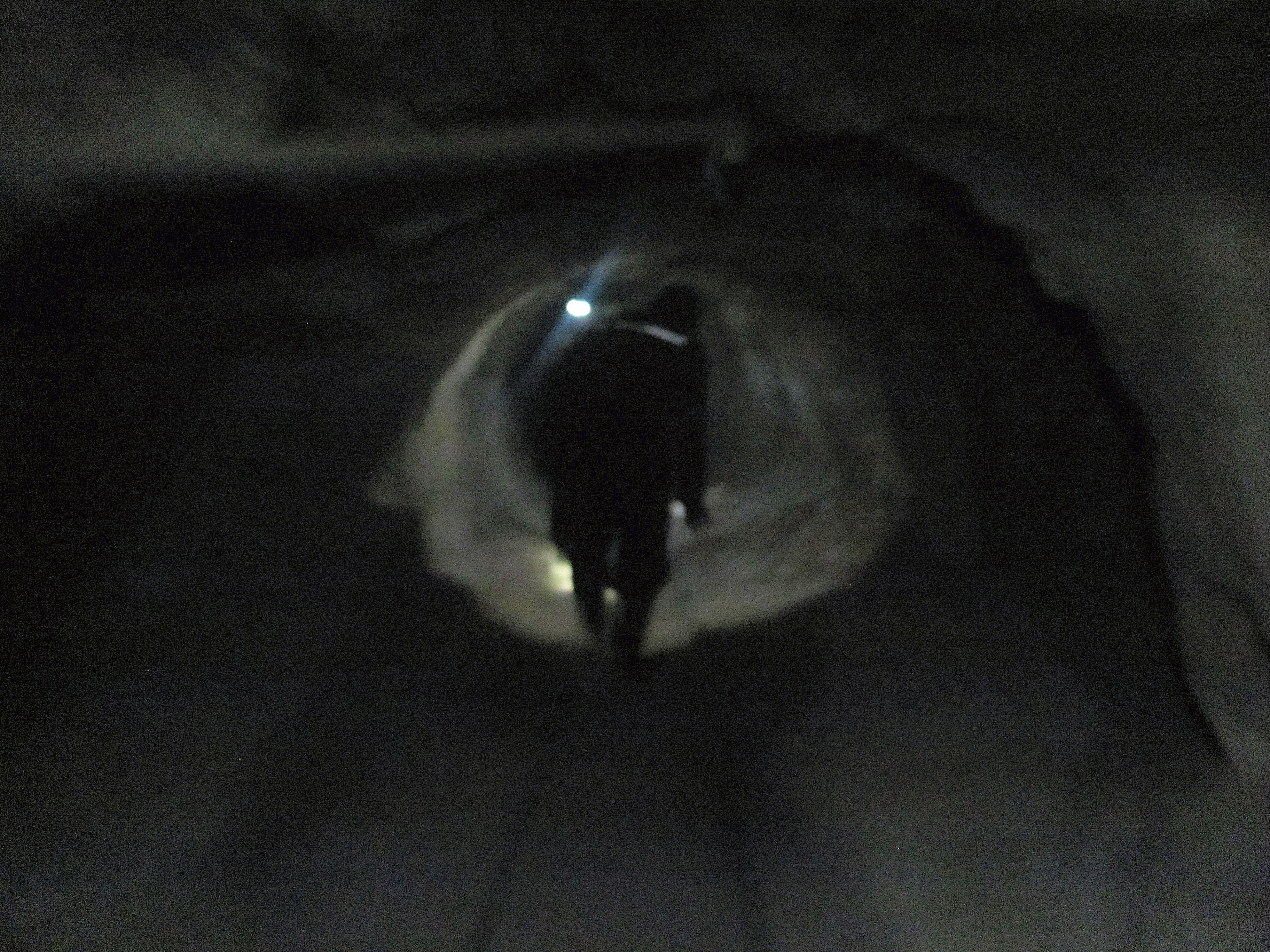
Only 20 meters in and you’ll see the darkness closing in on you, as apart from headlights there’s no lighting in the mines. The first part you walk on one of the main cart-tracks. This tunnel is a little less than 2 meters high and about 3 meters wide. Every few minutes you’ll hear the guide yell ‘The big one is coming!‘ which means another 1000-pound full cart is approaching. You have about 3 seconds to step out of the way as the carts are pushed over the tracks at high-speeds to keep the momentum going, and you do not want to be caught out.
After a while you’ll turn into one of the side-tunnels where there are no tracks. Here the tunnels get more cramped, and the floor very uneven. Breathing becomes increasingly hard due to the heat in the tunnels, the elevation that is knocking the wind out of your lungs hard and the amount of fine-dust in the air. Climbing up and down increasingly steep paths also does not help. You’ll feel hard-pressed to remove your scarf – and will probably do so occasionally (do not worry a few hours of exposure will not cause Silicosis right away) – and even the bravest of men will start to feel claustrophobic. The best advice is to just stay calm, pace yourself and if you really feel panicked ask to go back. I doubted myself a few times as well but was glad I pushed on in the end.
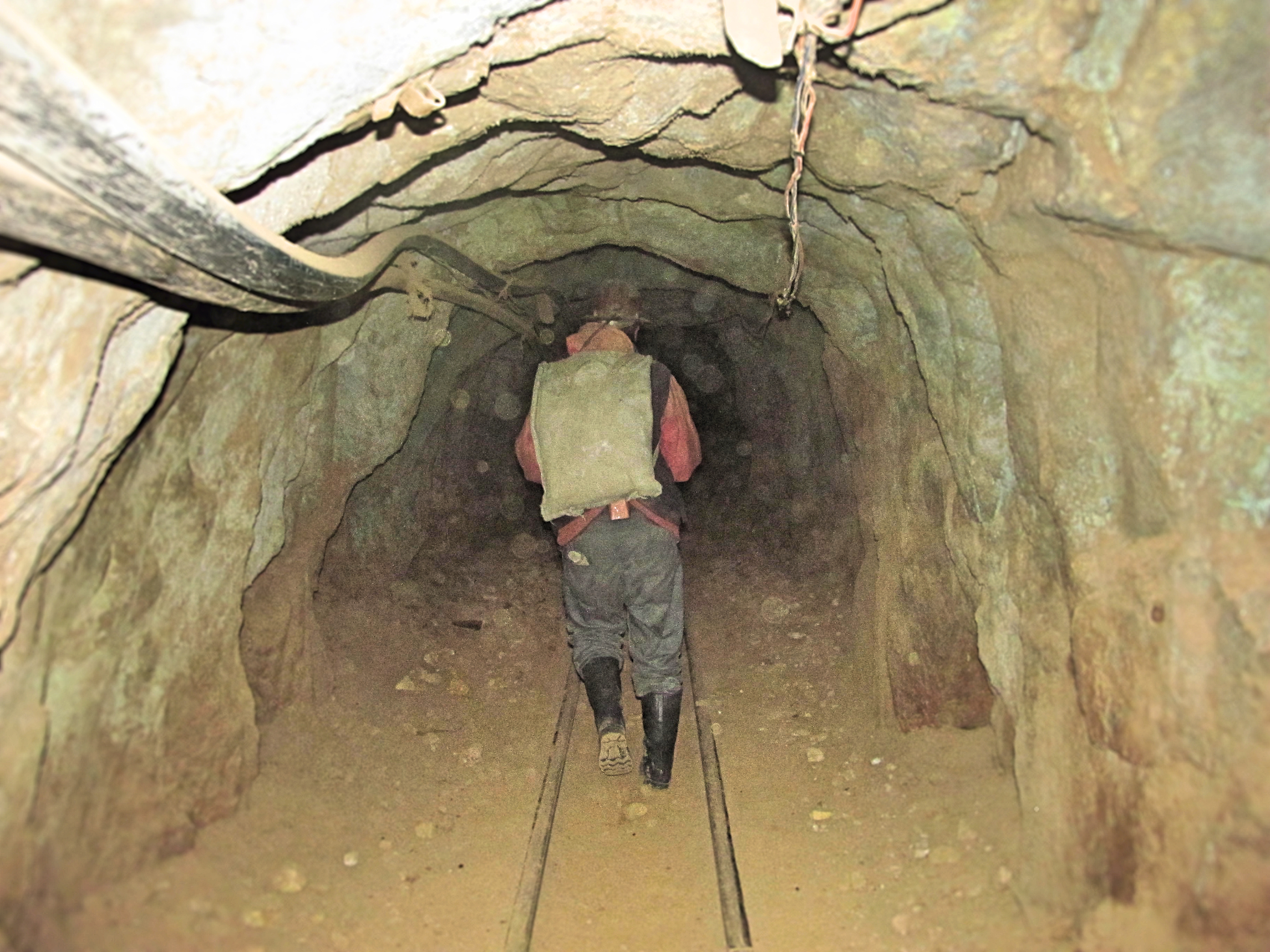
If you are lucky – as we were – they have planned some controlled demolition for that day. You’ll crouch up into a very cramped explosives-tunnel, lifting yourself up by pressing against the two sides of the almost vertical path. At times we had to rely on a small piece of wood that was pushed into place at the spot to prevent us from falling down over 20 meters into the cracks below. I repeat, this tour is not for the faint-hearted. After the explosives are planted you’ll head down back into a bigger tunnel and wait. The explosives-guy comes hurtling down the vertical shaft and not long after you’ll hear a soft low rumble as each explosive gets detonated. You feel the explosions in your stomach as small debris falls from the ceiling of the tunnel – best to not think about the fact that you’re in the heart of the Mountain That Eats Men and that if something goes wrong chances are slim you come out in one piece.
After the detonations you’ll visit one of the small chapels in the mines that gives honor to ‘El Tio’ or ‘uncle’, the devil-god that rules the mountain. Here you’ll share a small bottle of 95% alcohol with your guide and some miners if they are around. For every sip you take you drip some on the floor for El Tio (similar to the Inca-ritual where they honor ‘Pachamama’). We made sure to drip and take in enough ourselves to ensure our guide didn’t get too drunk as we still wanted to get out of the mountain alive.
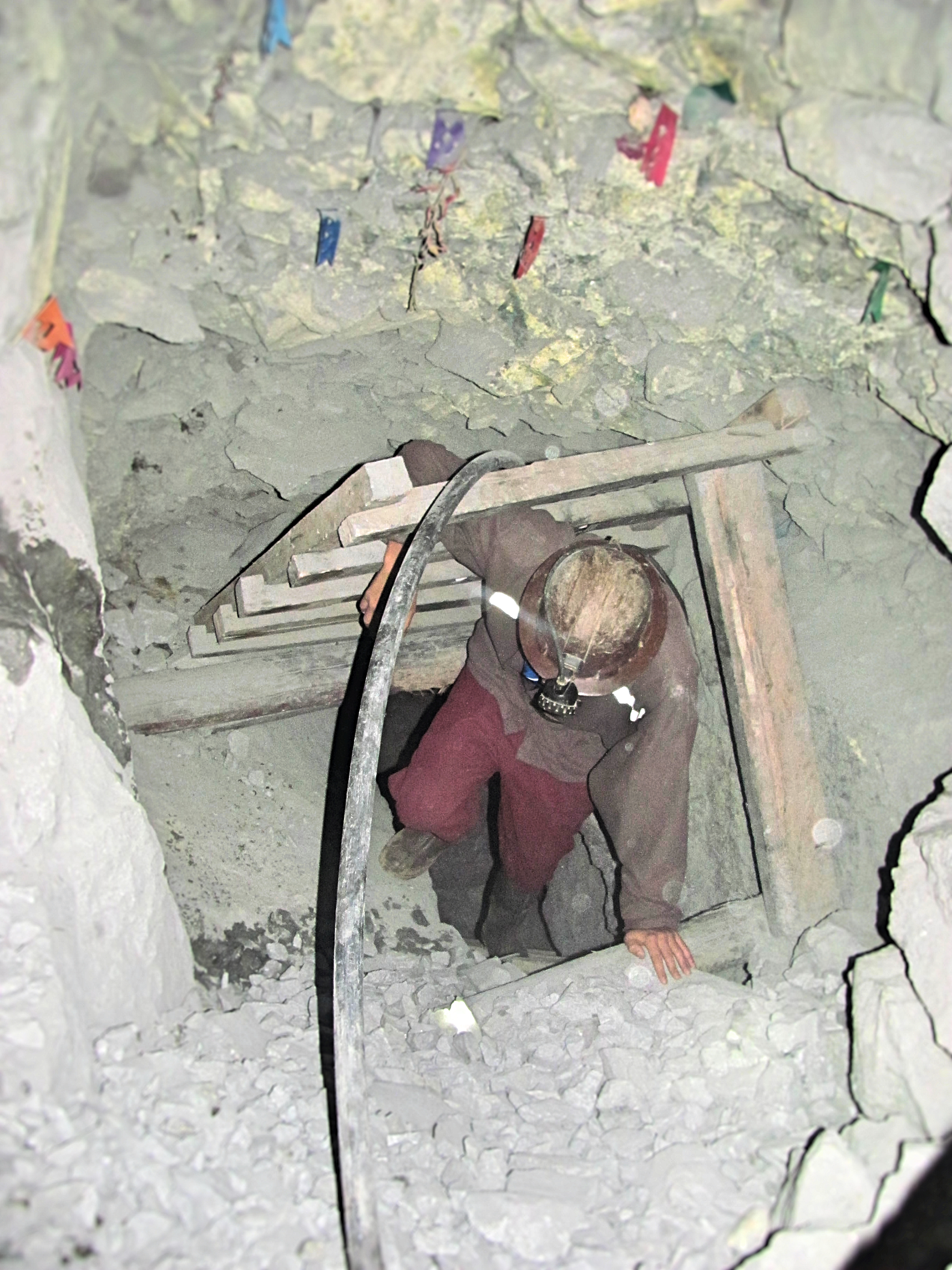
After the ritual you’ll be guided out of the mountain and will be taken to town by bus. I was so impressed by this experience that it took me a couple of days to wind down. When in Bolivia you should really consider visiting the mines. It will leave an impression that lasts forever.
